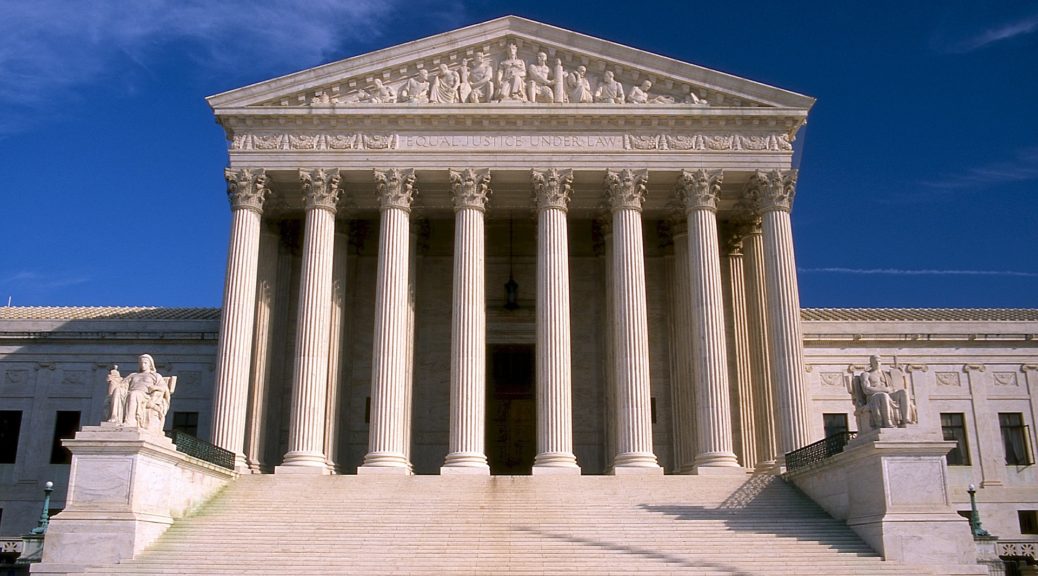In 2009, Congress passed the American Reinvestment and Recovery Act. In this law was a requirement that physicians and hospitals must start using electronic health records (EHR) by 2014. Written into the law were Medicare reimbursement penalties for those who have not converted to the electronic records within the stated time-frame.
The push for electronic health records, at least on the political stage, dates back to the 2004 State of the Union Address of President George W. Bush. In the Address, President Bush pushed for the establishment of the Office of the National Health Information Technology Coordinator and charged the office to develop a “health information technology infrastructure” that “reduces health care costs resulting from inefficiency, medical errors, inappropriate care and incomplete information.”[1]
One of the main incentives for establishing the EHR was to reduce health care costs. In fact, there were estimates that the EHR could reduce costs up to 20%.[2] Even though the use of electronic records has great potential to improve care and reduce costs, current limitations of the records have prevented these, hoped for benefits, from reaching their potential.
The Affordable Care Act has emphasized the need for an EHR.[3] Starting in 2015, Medicare payments would be reduced for physicians who have not adopted an electronic health record. Medicare has been directed under the law to look at cost and quality data gleaned from the electronic medical record in order to calculate payments for physicians. Some clinicians have chosen to stay with the paper record and take the loss. I think they are being short-sited.
First let’s look at the potential benefits of an electronic health record.
With an electronic medical record accessible to any health care provider, the records should be available at any time and at any site where care is being provided. There would be no delays in getting the information needed to provide timely and appropriate care. Previous care episodes, including lab values, radiographs, and other diagnostic studies would be available and visible over the internet. Operative notes, discharge and progress notes, consults and other written records would be legible and complete. This data would help prevent duplicative testing and would facilitate coding and accurate billing.
The electronic records would reduce the need to fill out the same forms every time a new provider was seen. It would allow each provider to be warned of any allergies or other critical information that was found during previous episodes of care; view alerts could be programmed to pop up and provide these warnings whenever the record is opened.
With electronic records, patients can communicate with their provider over the internet. Questions can be answered, new symptoms can be described, and appointments can be made or changed without an office visit or a phone call. Some care could be provided in an outpatient setting which would reduce costs. Management of diabetes, chronic obstructive pulmonary disease, and congestive heart failure are examples where there have been significant cost savings by keeping the patient healthy enough to stay out of the emergency rooms and/or being admitted for in-hospital stays for management of disease exacerbations.
Safeguards can be built into the system to prevent adverse events; preventing a prescription of a drug the patient is allergic to would not be allowed. Of course, a negligent provider may override the warnings, but that would put him at risk for a malpractice suit.
The records have areas where the provider can access search engines to find the latest medical information on disease entities. This would enhance his ability to order the appropriate diagnostic tests and make the appropriate therapeutic decisions. I once had a conversation with the General Counsel of IBM where I stated my concerns that Watson[4] may put physicians out of a job. I was assured that the computer was meant to help us, not to replace our best medical judgment.
The EHR can also remind the physician when certain care is due such as vaccinations and (shudder) colonoscopies.
Electronic records allow for easier referrals to specialists and allows for easier access to follow-up care.
E-prescriptions can be sent electronically to the pharmacy. Scripts would be less likely stolen and mistakes in verbal communication from sound-alike drugs would be minimized.
Electronic health records make it much easier to perform “data mining” for research and quality assurance endeavors. With the proper software, large groups of patients with various disease processes can be found. Charts, graphs, and costs can be ascertained with a click of a mouse. Various treatment modalities can be compared as to efficacy and cost effectiveness. This would allow advances in care to progress at a quicker pace; the cost of the research would be decreased as data can be gathered quickly by the computer. Previously, this research was tedious; researchers would gather the information one chart at a time. The data would be placed on spread sheets one patient at a time.
Quality data can be quickly found with the EHR. This would allow hospitals to keep an eye on quality measures and would allow for monitoring bodies to quickly identify low outliers so that remedial measures can be instituted in a timely fashion.
As a physician, I recognize the benefits of the EHR. I also recognize, and have experience with, its shortcomings.
For some reason, the different purveyors of the EHR have not made their systems compatible. The premise that the records would be available to all clinicians has not come to pass. The records are great if you stay within the system (like we have in the Veterans Administration), but the records are not accessible by care-givers outside systems.
Perhaps the greatest criticism of the electronic health record is that it interferes with the doctor-patient relationship. Physicians spend more time looking at the computer screen and typing than looking at and listening to the patient. The doctor-patient relationship is an intimate one. We listen to very private concerns and we lay on the hands to examine the body. This relationship is a property interest that lies with the patient and it can be argued that this privacy interest is protected by the United States Constitution. The government and any other third party should not be allowed to interfere with this relationship. And yet the forms we have to fill out for billing, research, and quality assurance does infringe on this interest.
Physicians are trained to gather data, think about possible diagnoses and then act using their best medical/surgical judgment. When we use the electronic record, entering data makes us feel like a clerk. If the computer tells us what to do, then how can we function as independent practitioners?
Electronic health records are expensive to put into a practice. They cost between $80 thousand and $100 thousand and it is often necessary to hire a scribe to enter the data. This scribe can be cost effective as it frees up the physician to better communicate with the patients and it allows him to generate extra income. These scribes can cost about $25 thousand a year in salary alone. Will the presence of the scribe infringe on the physician-patient relationship? Will the patient be willing to have another person, a non-physician, in the exam room? How much training and skill must the scribe have in order it ensure that the information entered into the medical record is accurate?
Between the cost of the electronic health record, the computers needed in each exam room to access the record, the scribe costs, and the decrease in reimbursements from Medicare, Medicaid, and other third party payers, it is not surprising that many private practitioners are leaving their practice and becoming employees of hospitals and medical groups. Becoming an employee of a hospital has its own set of problems.
Physicians should not be primarily concerned with how resources are spent and how forms should be filled out to best assure proper payment. Insurers and government efforts may not be aligned with the best interests of the patient. As more physicians become employees of hospitals and medical groups, more pressure is applied to generate income as opposed to optimize patient care. If the income generated by the practitioner does not meet the expectations of the employer, they may have their salary reduced or, worse, they may be let go.
It is noteworthy that the writers of the Affordable Care Act have chosen to not participate in either the state or federal exchanges. They want to keep what they already have. What do they know that we don’t?
Overall, I think the EHR is a good thing. I like having the patient’s records easily accessible from any computer in the hospital. The records are organized and they are easy to read. I was trained in the late 70’s and early 80’s when paper records were all there was. Often, the records were lost in the medical records section of the hospital. Even when we could get the records, some of the notes were illegible (doctors are notorious for terrible hand-writing), and often, the data was not up to date.
Despite the obvious benefits, improvements must be made. All EHRs need to be compatible and accessible for all providers. Use of the record must be easier so as not to detract from the physician-patient relationship. The costs must go down for the clinician (or payments must go up). These records are here to stay; we are not going back to paper.
As physicians, we took an oath that says “Primum, non nocere”—“First, do no harm.” This is part of the Hippocratic Oath and it is not written in any legislation that I am aware of.[5]
When patients come to their doctor, they are not concerned with regulations from the government that may be coercive and not in their best interests. They want the physician to take care of them to the best of their ability. This is what we physicians must continue to strive for. We are scarce medical resources. We should remember this.
[1]White House, “Transforming Health Care: The President’s Health Information Technology Plan,” 2004, http://www.whitehouse.gov/infocus/technology/economic_policy200404/chap3.html
[2] U.S. Department of Health and Human Services, “Office of the National Coordinator for Health Information Technology,” 23 May 2005, http://www.hhs.gov.healthit/valueHIT.html
[3] Section 3007 of the Affordable Care Act mandates that the Center for Medicare and Medicaid Services apply a value modifier under the Medicare Physician Fee Schedule. Cost and quality data, gleaned from the electronic health record, will be used in calculating payments for physicians.
[4] Conversation with Michelle Browdy, General Counsel, IBM (2015). Watson is the IBM supercomputer that beat the humans on Jeopardy. It was named after the founder of IBM, Thomas Watson, not, as many believe, Sherlock Holmes’ partner and friend, Dr. Watson.
[5] I have a copy of this oath on the wall of my office. I look at it every day that I am there.
by Darryl S. Weiman, M.D., J.D.
Professor, Cardiothoracic Surgery, University of Tennessee Health Science Center and Chief of Surgery, VAMC Memphis, TN








